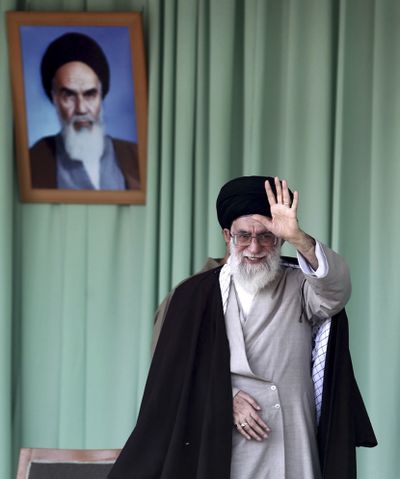Iran’s supreme leader is plot’s top suspect
Big payoff suggests high-level vetting

WASHINGTON – Though initially skeptical that top Iranian regime figures were behind a plot to assassinate Saudi Arabia’s ambassador to Washington, U.S. government officials became convinced by the operation’s money trail and now consider it likely that Iran’s supreme leader was aware of the plan.
“This is the kind of operation – the assassination of a diplomat on foreign soil – that would have been vetted at the highest levels of the Iranian government,” said a senior U.S. official. “We can’t prove that, but we do not think it was a rogue operation in any way.”
Law enforcement and intelligence officials penetrated the alleged plot from the start. But American officials said Wednesday that what persuaded them they were tracking something much more than just idle talk between an Iranian American used car salesman and a Drug Enforcement Administration informant was the transfer of $100,000 from Iran in July and August as a down payment to set the assassination in motion.
It became clear, they said, that the plan really was being orchestrated by the Quds Force, a secretive unit of Iran’s military.
“It’s very difficult to explain that transfer, which also aligned perfectly with what the informant was telling us, any other way,” the senior official said Wednesday.
Officials also said the U.S. picked up other intelligence that indicated the existence of the plot. Sen. Dianne Feinstein, D-Calif., said after a Senate Intelligence Committee briefing that human and signals intelligence had played a role in unraveling the plot.
Iran has condemned the allegations as false and “politically motivated.”
Iran has a complex government in which different arms of the regime are often in bitter conflict with each other. U.S. officials say the Quds Force, a branch of the Revolutionary Guard, supplies arms and training to insurgents who have killed American troops in Iraq and carries out covert operations, which have included assassinations. The Quds Force reports directly to the Supreme Leader Ali Khamenei, U.S. officials believe.
Khamenei has been in an increasingly tense power struggle with Iranian President Mahmoud Ahmadinejad, who, U.S. analysts believe, has little control over large parts of the nation’s security forces. Officials believe that Ahmadinejad and Iran’s intelligence service probably were not briefed on the Saudi assassination plot, the officials said.
Iran experts outside the government have questioned whether the Iranian regime would have condoned what U.S. officials acknowledge was an amateurish plot. The alleged conspiracy, as detailed in a FBI criminal complaint, seemed surprisingly sloppy and risky, experts said.
“I’m scratching my head over this,” said Greg Thielmann, a former State Department and congressional intelligence analyst. “It just doesn’t make sense.”